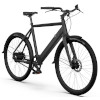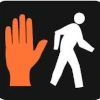Preparing for Motorized Personal Mobility Devices
 British Columbia's view of what consists of acceptable methods of transportation on our roads had changed considerably since I started policing in the 1980's. Back then, cars, trucks, motorcycles, bicycles and feet were pretty much all that was allowed. Devices like rollerblades, skateboards, motorized bicycles and scooters were either strictly controlled or forbidden completely.
British Columbia's view of what consists of acceptable methods of transportation on our roads had changed considerably since I started policing in the 1980's. Back then, cars, trucks, motorcycles, bicycles and feet were pretty much all that was allowed. Devices like rollerblades, skateboards, motorized bicycles and scooters were either strictly controlled or forbidden completely.

 When the light changes to green, drivers who intend to turn right or left are often focused on finding a gap in vehicle traffic to take advantage of. Pedestrians in the crosswalk are often not seen and a collision is the result. Leading pedestrian intervals are a simple walk light timing change that can help prevent these incidents.
When the light changes to green, drivers who intend to turn right or left are often focused on finding a gap in vehicle traffic to take advantage of. Pedestrians in the crosswalk are often not seen and a collision is the result. Leading pedestrian intervals are a simple walk light timing change that can help prevent these incidents.
 Probably one of the most dangerous things that we do as drivers is to make a left turn. As we sit in traffic waiting for a large enough gap between oncoming vehicles we risk being hit from behind, the most common collision type on our roads. When we do turn, we present the sides of our vehicle to other traffic which is the most vulnerable position to be in.
Probably one of the most dangerous things that we do as drivers is to make a left turn. As we sit in traffic waiting for a large enough gap between oncoming vehicles we risk being hit from behind, the most common collision type on our roads. When we do turn, we present the sides of our vehicle to other traffic which is the most vulnerable position to be in. BC's
BC's  I've often thought to myself over the years that if I ever wanted to kill someone the best way to do it would be to drive over them. I would wait until I found them stepping into a crosswalk and make sure that I hit them while I was turning onto the street they were crossing. I would then screech to a halt, return and scream "Oh no, I didn't see them, I'm sorry!"
I've often thought to myself over the years that if I ever wanted to kill someone the best way to do it would be to drive over them. I would wait until I found them stepping into a crosswalk and make sure that I hit them while I was turning onto the street they were crossing. I would then screech to a halt, return and scream "Oh no, I didn't see them, I'm sorry!" Bruce Mol is a cyclist from Vernon who likes to help others learn about cycling in everyday life. In this video from
Bruce Mol is a cyclist from Vernon who likes to help others learn about cycling in everyday life. In this video from  Just because we can go fast doesn't mean that we should. When it comes to the speeds set on our highways, many drivers look at it solely from an engineering point of view. Letting physics and what you can (or can't) see as your guide to personal speed setting does not take in the larger picture.
Just because we can go fast doesn't mean that we should. When it comes to the speeds set on our highways, many drivers look at it solely from an engineering point of view. Letting physics and what you can (or can't) see as your guide to personal speed setting does not take in the larger picture. Who goes first at a 4 way stop? The concept should be simple, first to stop, first to go. However, when more than one driver stops at the same time the situation becomes a bit more complicated. Do you know who to give the right of way to?
Who goes first at a 4 way stop? The concept should be simple, first to stop, first to go. However, when more than one driver stops at the same time the situation becomes a bit more complicated. Do you know who to give the right of way to? Konho Kim was driving his car on 108 Avenue approaching the 4 way stop at the intersection of 164 Street in Surrey. He stopped and observed a car driven by Megan Levonne approching from his left. Expecting Ms. Levonne to stop, Mr. Kim proceeded to make a right turn. The two vehicles collided in the intersection. This case
Konho Kim was driving his car on 108 Avenue approaching the 4 way stop at the intersection of 164 Street in Surrey. He stopped and observed a car driven by Megan Levonne approching from his left. Expecting Ms. Levonne to stop, Mr. Kim proceeded to make a right turn. The two vehicles collided in the intersection. This case  Question: I filed for disclosure and received a call today from the traffic court registry. They told me that the Crown Counsel is not involved and that only the officer who issued the ticket can provide disclosure. I requested the officers evidence and notes the same day I filed for dispute and never received a response.
Question: I filed for disclosure and received a call today from the traffic court registry. They told me that the Crown Counsel is not involved and that only the officer who issued the ticket can provide disclosure. I requested the officers evidence and notes the same day I filed for dispute and never received a response.